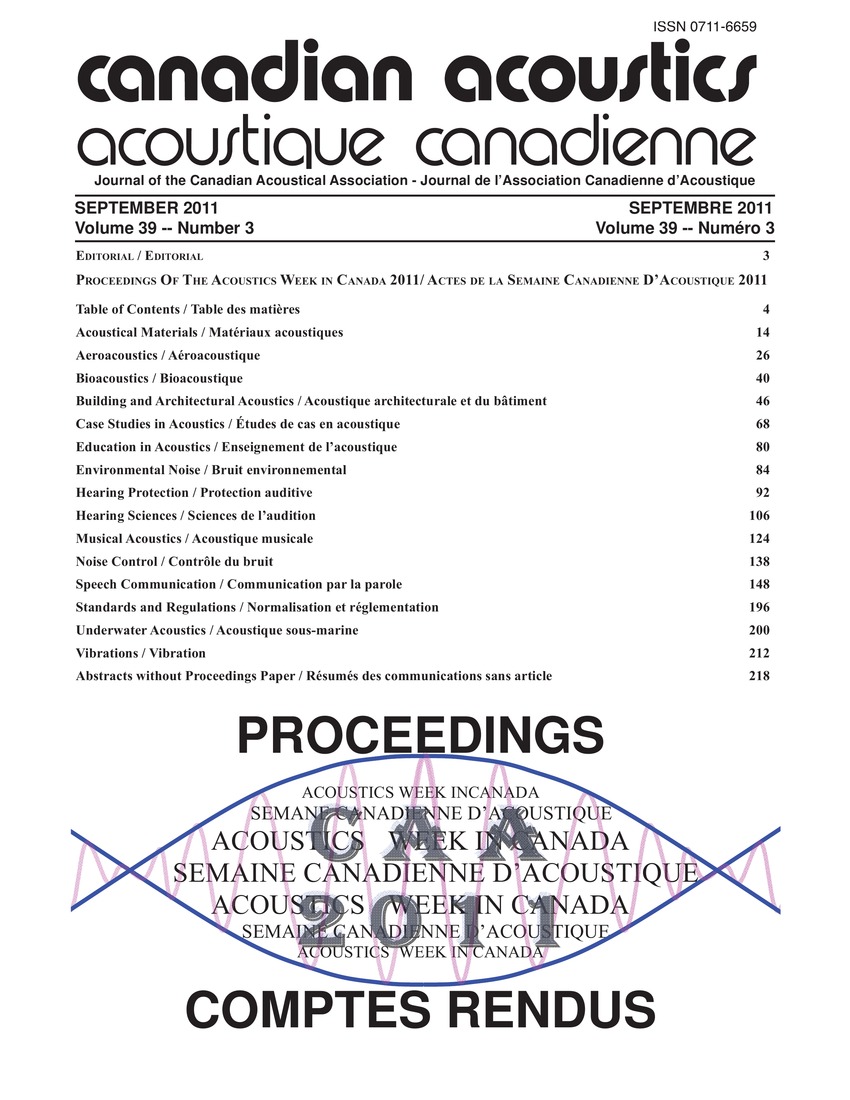Comparison of different methods to measure structural damping
Keywords:
Architectural acoustics, Energy dissipation, Frequency bands, Reverberation, Bending wave, Coupling loss, Excitation points, Far field, Infinite plate, Internal loss, Loss mechanisms, Low frequency, Material damping, Near fields, Point sources, Reverberation time, Structural damping, Vibration patternAbstract
Structural damping indicates the energy loss in materials and systems respectively. Hereby, different loss mechanisms must be distinguished: namely internal losses or material damping due to conversion of kinetic energy into heat and coupling losses due to transmission of energy to adjoining systems. The reverberation time was obtained by exciting the specimen with a small force hammer at three positions using three repeats and measuring the acceleration at eight points distributed over the specimen. Schroeder Plots. A very simplistic approach is used assuming a circular bending wave front around a point source on an isotrupic infinite plate in the far field. The low agreement of the drawaway method is explained by the multiple simplifications made by the model. Even in the midrange frequency bands, reflections make detecting a clear decay impossible. At low frequencies the near field additionally distort the vibration pattern especially closer to the excitation point.Additional Files
Published
How to Cite
Issue
Section
License
Author Licensing Addendum
This Licensing Addendum ("Addendum") is entered into between the undersigned Author(s) and Canadian Acoustics journal published by the Canadian Acoustical Association (hereinafter referred to as the "Publisher"). The Author(s) and the Publisher agree as follows:
-
Retained Rights: The Author(s) retain(s) the following rights:
- The right to reproduce, distribute, and publicly display the Work on the Author's personal website or the website of the Author's institution.
- The right to use the Work in the Author's teaching activities and presentations.
- The right to include the Work in a compilation for the Author's personal use, not for sale.
-
Grant of License: The Author(s) grant(s) to the Publisher a worldwide exclusive license to publish, reproduce, distribute, and display the Work in Canadian Acoustics and any other formats and media deemed appropriate by the Publisher.
-
Attribution: The Publisher agrees to include proper attribution to the Author(s) in all publications and reproductions of the Work.
-
No Conflict: This Addendum is intended to be in harmony with, and not in conflict with, the terms and conditions of the original agreement entered into between the Author(s) and the Publisher.
-
Copyright Clause: Copyright on articles is held by the Author(s). The corresponding Author has the right to grant on behalf of all Authors and does grant on behalf of all Authors, a worldwide exclusive license to the Publisher and its licensees in perpetuity, in all forms, formats, and media (whether known now or created in the future), including but not limited to the rights to publish, reproduce, distribute, display, store, translate, create adaptations, reprints, include within collections, and create summaries, extracts, and/or abstracts of the Contribution.


